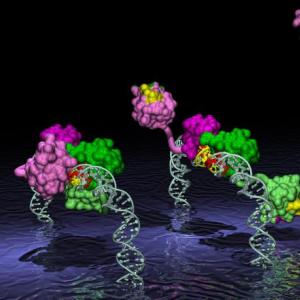Archimedes' law in simple words. Buoyancy force
One of the first physical laws studied by students high school. Any adult remembers at least approximately this law, no matter how far he is from physics. But sometimes it's useful to return to precise definitions and wording - and understand the details of this law that may have been forgotten.
What does Archimedes' law say?
There is a legend that the ancient Greek scientist discovered his famous law while taking a bath. Having plunged into a container filled to the brim with water, Archimedes noticed that the water splashed out - and experienced an epiphany, instantly formulating the essence of the discovery.
Most likely, in reality the situation was different, and the discovery was preceded by long observations. But this is not so important, because in any case, Archimedes managed to discover the following pattern:
- plunging into any liquid, bodies and objects experience several multidirectional forces at once, but directed perpendicular to their surface;
- the final vector of these forces is directed upward, so any object or body, finding itself in a liquid at rest, experiences pushing;
- in this case, the buoyancy force is exactly equal to the coefficient that is obtained if the product of the volume of the object and the density of the liquid is multiplied by the acceleration of free fall.
So, Archimedes established that a body immersed in a liquid displaces a volume of liquid that is equal to the volume of the body itself. If only part of a body is immersed in a liquid, then it will displace the liquid, the volume of which will be equal to the volume of only the part that is immersed.
The same principle applies to gases - only here the volume of the body must be correlated with the density of the gas.
Can be formulated physical law and a little simpler - the force that pushes an object out of a liquid or gas is exactly equal to the weight of the liquid or gas displaced by this object during immersion.
The law is written in the form of the following formula:

What is the significance of Archimedes' law?
The pattern discovered by the ancient Greek scientist is simple and completely obvious. But at the same time its significance for everyday life cannot be overstated.
It is thanks to the knowledge about the pushing of bodies by liquids and gases that we can build river and sea vessels, as well as airships and balloons for aeronautics. Heavy metal ships do not sink due to the fact that their design takes into account Archimedes' law and numerous consequences from it - they are built so that they can float on the surface of the water, and do not sink. Aeronautics operate on a similar principle - they use the buoyancy of air, becoming, as it were, lighter in the process of flight.
Let's continue our study of Archimedean force. Let's do some experiments. We hang two identical balls from the balance beam. Their weight is the same, so the rocker is in balance (Fig. “a”). Place an empty glass under the right ball. This will not change the weight of the balls, so the equilibrium will remain (Fig. “b”).
Second experience. Let's hang a large potato from the dynamometer. You see that its weight is 3.5 N. Let's immerse the potato in water. We will find that its weight has decreased and become equal to 0.5 N.
Let's calculate the change in potato weight:
DW = 3.5 N – 0.5 N = 3 N
Why did the weight of the potato decrease by exactly 3 N? Obviously because in water the potatoes were subjected to a buoyant force of the same magnitude. In other words, Archimedes' force is equal to the change in weight t ate:
This formula expresses method for measuring Archimedean force: you need to measure your body weight twice and calculate its change. The resulting value is equal to the Archimedes force.
To derive the following formula let's do an experiment with the “Archimedes bucket” device. Its main parts are as follows: spring with arrow 1, bucket 2, body 3, casting vessel 4, cup 5.
First, the spring, bucket and body are suspended from a tripod (Fig. “a”) and the position of the arrow is marked with a yellow mark. The body is then placed in a casting vessel. As the body sinks, it displaces a certain volume of water, which is poured into a glass (Fig. “b”). The body weight becomes lighter, the spring compresses, and the arrow rises above the yellow mark.
Let's pour the water displaced by the body from the glass into the bucket (Fig. “c”). The most amazing thing is that when the water is poured (Figure “d”), the arrow will not just go down, but will point exactly to the yellow mark! Means, the weight of water poured into the bucket balanced the Archimedean force. In the form of a formula, this conclusion will be written as follows:
Summarizing the results of two experiments, we obtain Archimedes' law: the buoyant force acting on a body in a liquid (or gas) is equal to the weight of the liquid (gas) taken in the volume of this body and is directed opposite to the weight vector.
In § 3-b we indicated that the Archimedes force usually directed upwards. Since it is opposite to the weight vector, and it is not always directed downward, the Archimedean force also does not always act upward. For example, in rotating centrifuge in a glass of water, air bubbles will not float up, but deviate towards the axis of rotation.
A body immersed in a liquid or gas is subject to a buoyancy force equal to the weight of the liquid or gas displaced by this body.
In integral form
![]()
Archimedes' power is always directed opposite to the force of gravity, therefore the weight of a body in a liquid or gas is always less than the weight of this body in a vacuum.
If a body floats on a surface or moves uniformly up or down, then the buoyant force (also called Archimedean force ) is equal in magnitude (and opposite in direction) to the force of gravity acting on the volume of liquid (gas) displaced by the body, and is applied to the center of gravity of this volume.

As for bodies that are in gas, for example in air, to find the lifting force (Archimedes Force), you need to replace the density of the liquid with the density of the gas. For example, a helium balloon flies upward due to the fact that the density of helium is less than the density of air.
In the absence of a gravitational field (Gravity), that is, in a state of weightlessness, Archimedes' law doesn't work. Astronauts are quite familiar with this phenomenon. In particular, in zero gravity there is no phenomenon of convection (natural movement of air in space), therefore, for example, air cooling and ventilation of living compartments spacecraft produced forcibly by fans
In the formula we used:
Archimedes' force
Liquid density
Despite the obvious differences in the properties of liquids and gases, in many cases their behavior is determined by the same parameters and equations, which makes it possible to use a unified approach to studying the properties of these substances.
In mechanics, gases and liquids are considered as continuums. It is assumed that the molecules of a substance are distributed continuously in the part of space they occupy. In this case, the density of a gas depends significantly on pressure, while for a liquid the situation is different. Usually, when solving problems, this fact is neglected, using the generalized concept of an incompressible fluid, the density of which is uniform and constant.
Definition 1
Pressure is defined as the normal force $F$ acting on the part of the fluid per unit area $S$.
$ρ = \frac(\Delta P)(\Delta S)$.
Note 1
Pressure is measured in pascals. One Pa equal to force in 1 N acting per unit area of 1 sq. m.
In a state of equilibrium, the pressure of a liquid or gas is described by Pascal's law, according to which the pressure on the surface of a liquid produced by external forces is transmitted by the liquid equally in all directions.
In mechanical equilibrium, the horizontal fluid pressure is always the same; therefore, the free surface of a static liquid is always horizontal (except in cases of contact with the walls of the vessel). If we take into account the condition of incompressibility of the liquid, then the density of the medium under consideration does not depend on pressure.
Let's imagine a certain volume of liquid bounded by a vertical cylinder. Let's denote the cross section of the liquid column as $S$, its height as $h$, liquid density as $ρ$, and weight as $P=ρgSh$. Then the following is true:
$p = \frac(P)(S) = \frac(ρgSh)(S) = ρgh$,
where $p$ is the pressure at the bottom of the vessel.
It follows that pressure varies linearly with altitude. In this case, $ρgh$ is the hydrostatic pressure, the change in which explains the emergence of the Archimedes force.
Formulation of Archimedes' law
Archimedes' law, one of the basic laws of hydrostatics and aerostatics, states: a body immersed in a liquid or gas is acted upon by a buoyant or lifting force equal to the weight of the volume of liquid or gas displaced by the part of the body immersed in the liquid or gas.
Note 2
Emergence Archimedean force due to the fact that the medium - liquid or gas - tends to occupy the space taken up by the body immersed in it; in this case the body is pushed out of the medium.
Hence the second name for this phenomenon – buoyancy or hydrostatic lift.
The buoyancy force does not depend on the shape of the body, as well as on the composition of the body and its other characteristics.
The emergence of Archimedean force is due to the difference in environmental pressure at different depths. For example, the pressure on the lower layers of water is always greater than on the upper layers.
The manifestation of Archimedes' force is possible only in the presence of gravity. So, for example, on the Moon the buoyant force will be six times less than on Earth for bodies of equal volumes.
The emergence of Archimedes' Force
Let's imagine any liquid medium, for example, ordinary water. Let us mentally select an arbitrary volume of water by a closed surface $S$. Since all liquid is in mechanical equilibrium, the volume we have allocated is also static. This means that the resultant and moment of external forces acting on this limited volume take zero values. External forces in this case are the weight of a limited volume of water and the pressure of the surrounding liquid on the outer surface $S$. It turns out that the resultant $F$ force hydrostatic pressure, experienced by the surface $S$, is equal to the weight of the volume of liquid that was limited by the surface $S$. In order for the total moment of external forces to vanish, the resultant $F$ must be directed upward and pass through the center of mass of the selected volume of liquid.
Now let us denote that instead of this conditional limited liquid, any solid appropriate volume. If the condition of mechanical equilibrium is met, then from the side environment no changes will occur, including the pressure acting on the surface $S$ will remain the same. Thus we can give a more precise formulation of Archimedes' law:
Note 3
If a body immersed in a liquid is in mechanical equilibrium, then the buoyant force of hydrostatic pressure acts on it from the environment surrounding it, which is numerically equal to the weight of the medium in the volume displaced by the body.
The buoyant force is directed upward and passes through the center of mass of the body. So, according to Archimedes’ law, the buoyancy force holds:
$F_A = ρgV$, where:
- $V_A$ - buoyancy force, H;
- $ρ$ - density of liquid or gas, $kg/m^3$;
- $V$ - volume of a body immersed in the medium, $m^3$;
- $g$ - free fall acceleration, $m/s^2$.
The buoyant force acting on the body is opposite in direction to the force of gravity, therefore the behavior of the immersed body in the medium depends on the ratio of the gravity moduli $F_T$ and the Archimedean force $F_A$. There are three possible cases here:
- $F_T$ > $F_A$. The force of gravity exceeds the buoyant force, therefore the body sinks/falls;
- $F_T$ = $F_A$. The force of gravity is equalized with the buoyant force, so the body “hangs” in the liquid;
- $F_T$
The dependence of pressure in a liquid or gas on the depth of immersion of a body leads to the appearance of a buoyant force (or otherwise the Archimedes force), acting on any body immersed in a liquid or gas.
The Archimedean force is always directed opposite to the force of gravity, therefore the weight of a body in a liquid or gas is always less than the weight of this body in a vacuum.
The magnitude of the Archimedean force is determined by Archimedes' law.
The law is named after the ancient Greek scientist Archimedes, who lived in the 3rd century BC.

The discovery of the fundamental law of hydrostatics is the greatest achievement of ancient science. Most likely, you already know the legend about how Archimedes discovered his law: “One day the Syracusan king Hiero called him and said.... And what happened next? ...
Archimedes' law was first mentioned by him in his treatise "On Floating Bodies." Archimedes wrote: “bodies heavier than the liquid, immersed in this liquid, will sink until they reach the very bottom, and in the liquid they will become lighter by the weight of the liquid in a volume equal to the volume of the immersed body.”
Another formula for determining Archimedean force:
It is interesting that the Archimedes force is zero when a body immersed in a liquid is tightly pressed to the bottom with its entire base.
WEIGHT OF A BODY IMMEDIED IN A LIQUID (OR GAS)
Body weight in vacuum Po=mg.
If a body is immersed in a liquid or gas,
That P = Po - Fa = Po - Pzh
The weight of a body immersed in a liquid or gas is reduced by the amount of buoyant force acting on the body.
Or else:
A body immersed in a liquid or gas loses as much weight as the liquid it displaced weighs.
BOOKSHELF
TURNS OUT
The density of organisms living in water is almost no different from the density of water, so they don’t need strong skeletons!

Fish regulate their diving depth by changing the average density of their body. To do this, they only need to change the volume of the swim bladder by contracting or relaxing the muscles.
Off the coast of Egypt, there is an amazing fagak fish. The approach of danger forces the fagak to quickly swallow water. At the same time, rapid decomposition of food products occurs in the fish esophagus with the release of a significant amount of gases. Gases fill not only the active cavity of the esophagus, but also the blind outgrowth attached to it. As a result, the phagak's body swells greatly, and, in accordance with Archimedes' law, it quickly floats to the surface of the reservoir. Here he swims, hanging upside down, until the gases released in his body disappear. After this, gravity lowers it to the bottom of the reservoir, where it takes refuge among the bottom algae.

Chilim (water chestnut) produces heavy fruits under water after flowering. These fruits are so heavy that they can easily drag the entire plant to the bottom. However, at this time, in the chilim growing in deep water, swellings appear on the petioles of the leaves, giving it the necessary lifting force, and it does not sink.







